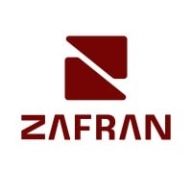


Tines and Microsoft Defender compete in security automation and vulnerability management. Tines is perceived as easier to use and deploy, while Microsoft Defender excels in advanced threat detection, highlighting their distinct advantages in usability and security capabilities.
Features: Tines offers an easy-to-use automation builder, integration with various platforms, and deployment flexibility. Microsoft Defender provides robust threat detection, comprehensive vulnerability assessment tools, and strong asset protection capabilities.
Room for Improvement: Tines could enhance its threat detection and expand its vulnerability assessment tools. There is a need for more extensive security insights and advanced configurations. Microsoft Defender can improve its ease of deployment, make its system more intuitive for non-technical users, and streamline integration processes.
Ease of Deployment and Customer Service: Tines is known for quick, seamless deployment with minimal technical requirements and responsive customer service. Microsoft Defender's deployment is more complex due to its extensive features but is backed by robust technical support that aids in advanced configurations.
Pricing and ROI: Tines is cost-effective, offering a quick ROI due to its straightforward setup and process agility. While Microsoft Defender has a higher initial cost, it justifies its price with significant long-term ROI through enhanced security measures and risk mitigation.
| Product | Market Share (%) |
|---|---|
| Microsoft Defender Vulnerability Management | 2.8% |
| Wiz | 10.8% |
| Tenable Nessus | 8.0% |
| Other | 78.4% |
| Product | Market Share (%) |
|---|---|
| Tines | 7.3% |
| Microsoft Sentinel | 16.3% |
| Palo Alto Networks Cortex XSOAR | 9.7% |
| Other | 66.7% |



| Company Size | Count |
|---|---|
| Small Business | 8 |
| Midsize Enterprise | 2 |
| Large Enterprise | 5 |
Zafran Security integrates with existing security tools to identify and mitigate vulnerabilities effectively, proving that most critical vulnerabilities are not exploitable, optimizing threat management.
Zafran Security introduces an innovative operating model for managing security threats and vulnerabilities. By leveraging the threat exposure management platform, it pinpoints and prioritizes exploitable vulnerabilities, reducing risk through immediate remediation. This platform enhances your hybrid cloud security by normalizing vulnerability signals and integrating specific IT context data, such as CVE runtime presence and internet asset reachability, into its analysis. No longer reliant on patch windows, Zafran Security allows you to manage risks actively.
What are the key features of Zafran Security?
What benefits can users expect from Zafran Security?
In industries where security is paramount, such as finance and healthcare, Zafran Security provides invaluable protection by ensuring that only exploitable vulnerabilities are addressed. It allows entities to maintain robust security measures while allocating resources efficiently, fitting seamlessly into existing security strategies.
Microsoft Defender Vulnerability Management enables organizations to identify vulnerabilities, manage patches, and fortify threat detection. It offers endpoint assessments, cloud incident management, and dynamic security through Microsoft's Security Scorecard integration.
Organizations leverage Microsoft Defender Vulnerability Management for advanced threat detection and response. It provides robust tools for vulnerability assessment and cloud incident management, integrated with Microsoft's Security Scorecard to enhance dynamic security profiling. Key features include automatic patch deployment, security configuration management, and seamless integration with Microsoft platforms, benefiting both on-prem and cloud environments. Organizations can track vulnerabilities with severity-based reports, helping manage outdated software and minimizing threat exposure.
What are the key features of Microsoft Defender Vulnerability Management?In healthcare, Microsoft Defender Vulnerability Management helps manage compliance with health regulations, while in finance, it aids in securing sensitive data from cyber threats. Manufacturing sectors benefit from its patch management, keeping operational technology systems less vulnerable to disruptions.
Tines offers no-code and low-code automation for users to automate tasks without coding expertise, integrating seamlessly with APIs to enhance incident management and security operations.
Known for a vendor-neutral approach, Tines provides detailed documentation and live chat support, allowing for effective integration with other tools, scheduling capabilities, and streamlined processes that save time and effort. Users find it intuitive for efficient task handling, making manual intervention unnecessary. Challenges include the need for more comprehensive documentation and instructional videos, as well as improvements in AI integration and reporting aesthetics. Pricing is also noted as higher compared to alternatives.
What are the most important features of Tines?Tines primarily serves organizations in the security sector, automating security operations such as alert detection and managed detection and response. It's utilized extensively in security operation centers for tasks like phishing email processing, ticket creation, IOC investigations, and ticket assignments within enterprise security frameworks, with multiple teams delivering Tines services to enhance task handling efficiency.
We monitor all Vulnerability Management reviews to prevent fraudulent reviews and keep review quality high. We do not post reviews by company employees or direct competitors. We validate each review for authenticity via cross-reference with LinkedIn, and personal follow-up with the reviewer when necessary.